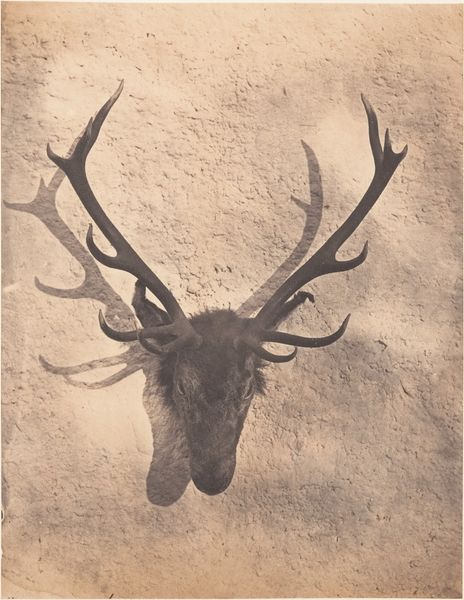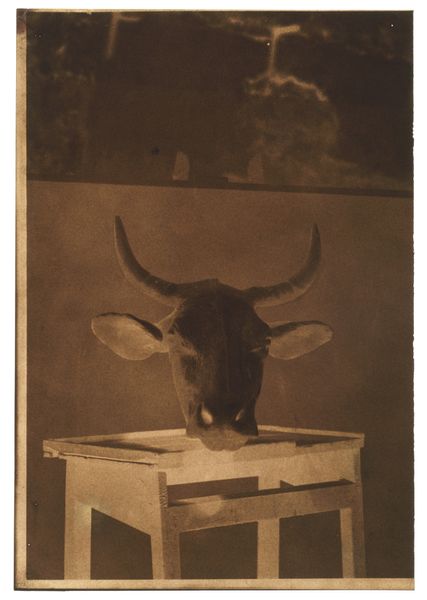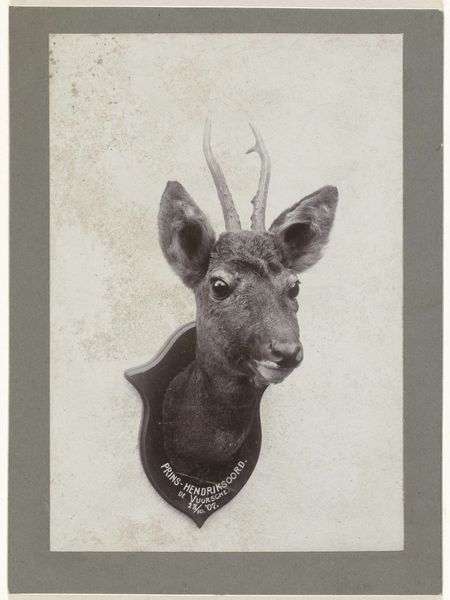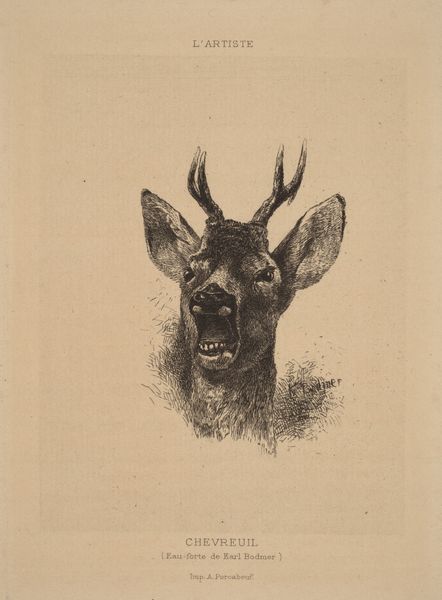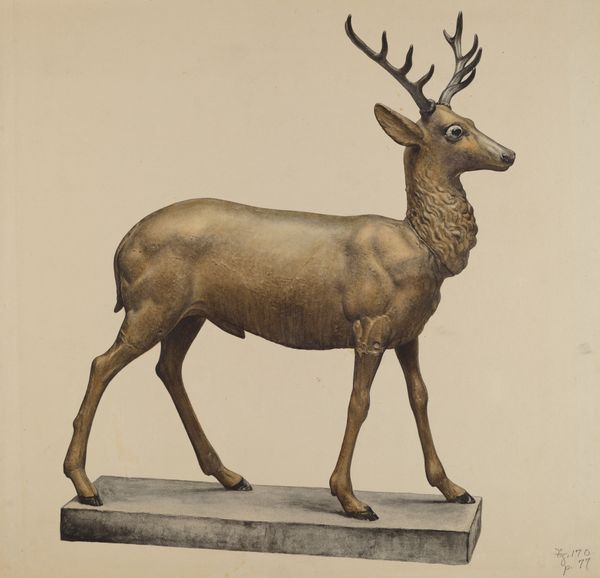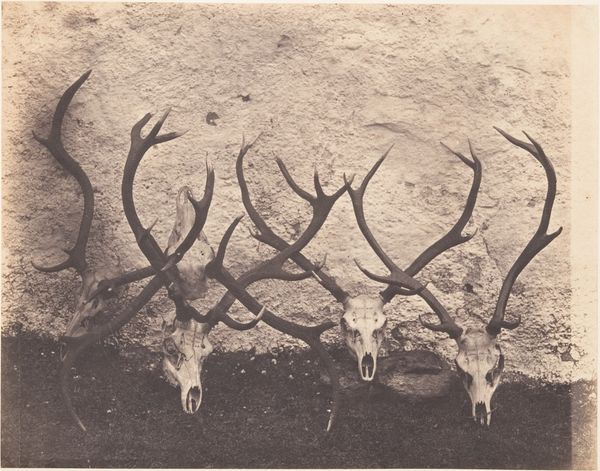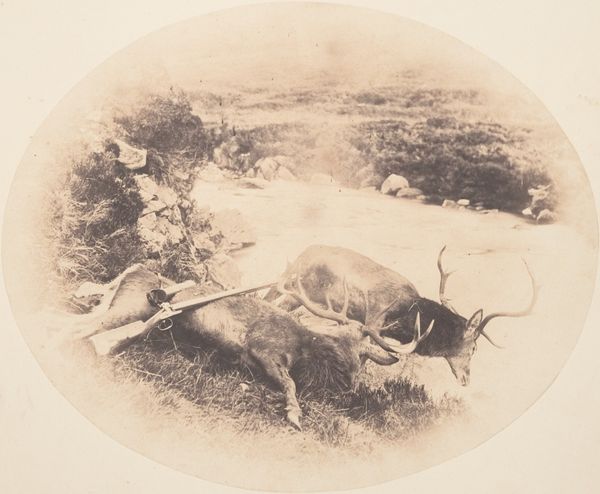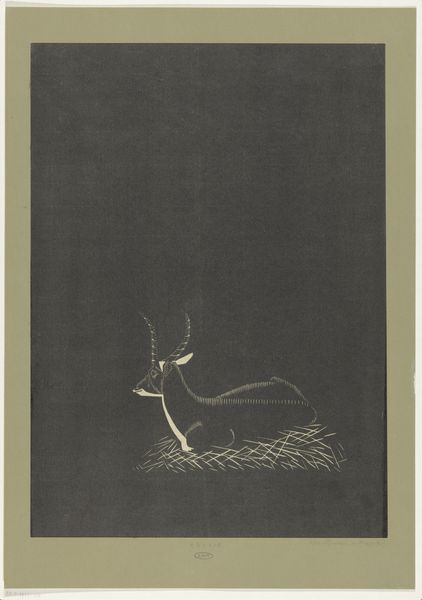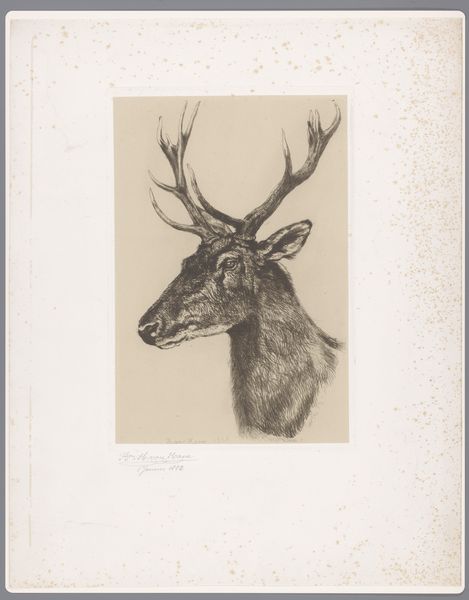![[Stag Trophy Head Killed by Ned Ross] by Horatio Ross](/_next/image?url=https%3A%2F%2Fd2w8kbdekdi1gv.cloudfront.net%2FeyJidWNrZXQiOiAiYXJ0ZXJhLWltYWdlcy1idWNrZXQiLCAia2V5IjogImFydHdvcmtzLzk4MTE2YWRhLWY5ZDktNGViOC1iNmNlLTRiOWNkOWI5ZTY3My85ODExNmFkYS1mOWQ5LTRlYjgtYjZjZS00YjljZDliOWU2NzNfZnVsbC5qcGciLCAiZWRpdHMiOiB7InJlc2l6ZSI6IHsid2lkdGgiOiAxOTIwLCAiaGVpZ2h0IjogMTkyMCwgImZpdCI6ICJpbnNpZGUifX19&w=3840&q=75)
photography, gelatin-silver-print
#
still-life-photography
#
landscape
#
photography
#
gelatin-silver-print
Dimensions: 19.6 x 15.5 cm (7 11/16 x 6 1/8 in.)
Copyright: Public Domain
Editor: Here we have a gelatin silver print titled "[Stag Trophy Head Killed by Ned Ross]", captured by Horatio Ross in 1857. The somber monochrome and the direct gaze of the stag gives it a feeling of dignified melancholy, a strangely poetic record of a hunt. How do you interpret this work? Curator: Poetic is the word, I think! It’s a curious collision of Victorian trophy culture and something else…something far more intimate. Ross doesn't just give us taxidermy; it’s a quiet drama. Think about what photography meant then—striving to record "reality," right? But Ross superimposes the image, almost like a ghostly echo of its former self. What does that suggest about the stag, the hunter, or even the act of killing itself? Does that strike you as straightforward trophy documentation, or is there something thornier at play? Editor: I see what you mean; it's more than just a record. The ghost image softens it, like a memory fading. Do you think the artistic choices he made reflected a personal viewpoint, beyond simply documenting his kill? Curator: Absolutely. By choosing photography – this nascent, "objective" medium – to depict such a traditionally macho subject, and then layering it with ambiguity, I reckon Ross was doing something quite subversive. Was he proud, conflicted, or just plain fascinated? The answers are as blurry as that overlapping image. The whole photograph speaks about our relationship with the natural world and the narratives we impose on it, intentionally or unintentionally. Editor: That adds a whole new dimension to what I initially saw. I had perceived only a straightforward, if somewhat sad, image of nature being exploited. Curator: It’s so easy to stop there! And perhaps that’s what Ross intended. But true art always has space for an ‘and then…?’ or even a ‘but what if...?’. It gives a glimpse beneath the veneer of simple acts. You never know where it leads if you just linger a bit, looking and pondering... Editor: I'll remember to always ask, ‘But what if…?’. Thanks, that was enlightening!
Comments
No comments
Be the first to comment and join the conversation on the ultimate creative platform.
